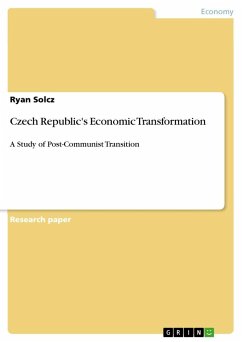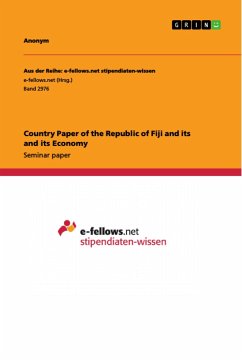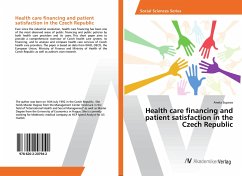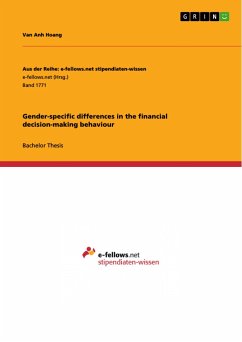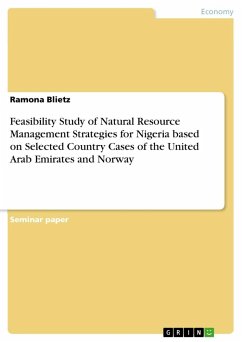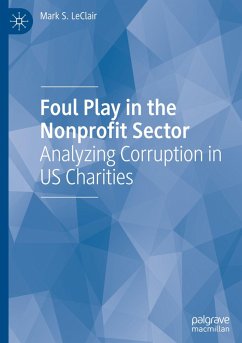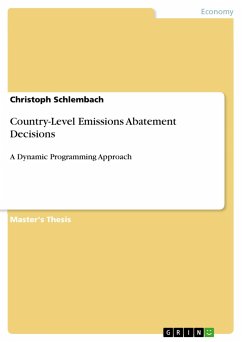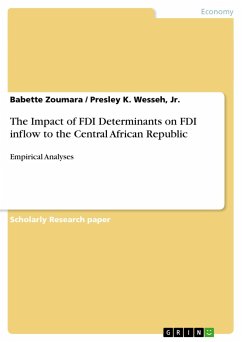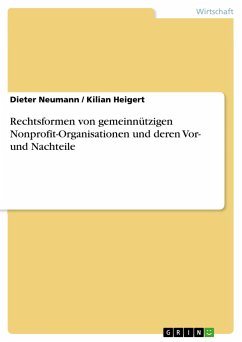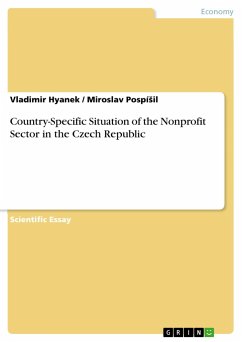
Country-Specific Situation of the Nonprofit Sector in the Czech Republic
Versandkostenfrei!
Versandfertig in 1-2 Wochen
18,95 €
inkl. MwSt.

PAYBACK Punkte
0 °P sammeln!
Scientific Essay from the year 2010 in the subject Economics - Other, Masaryk University (CENTRE FOR NONPROFIT SECTOR RESEARCH), language: English, abstract: This is an update of an older draft. It was written within the framework of Project No. 402/09/0941 "Revision of nonprofit sector theories as a source of public policy towards the nonprofit sector" supported by the Czech Science Foundation. The tradition of charity and voluntary association in "The Lands of the Czech Crown" is rich and old, dating back to the beginning of the Czech state in the 9th and 10th centuries. Its long evolution c...
Scientific Essay from the year 2010 in the subject Economics - Other, Masaryk University (CENTRE FOR NONPROFIT SECTOR RESEARCH), language: English, abstract: This is an update of an older draft. It was written within the framework of Project No. 402/09/0941 "Revision of nonprofit sector theories as a source of public policy towards the nonprofit sector" supported by the Czech Science Foundation. The tradition of charity and voluntary association in "The Lands of the Czech Crown" is rich and old, dating back to the beginning of the Czech state in the 9th and 10th centuries. Its long evolution culminated in the latter half the 19th century and in the twenty years of the first Czechoslovak Republic in the 1920's and 1930's, after which its evolution was disrupted by fifty years of totalitarian rule (1939-1989). In the 19th century the Industrial Revolution started transforming the economic, social and demographic map of the Czech Lands, but also spawned a new class of dispossessed. The new wealth and power of the bourgeoisie gave rise to many new scientific, scholarly, literary, cultural and social institutions; the poverty and societal upheavals led to the establishment of workers' self defence and mutual aid. A most important process, however, that contributed to an unprecedented boom in associational life in Czech society was the Czech National Revival (approx. 1770's - 1860's). Similar emancipation efforts in the German population and the competition and rivalry between the two national groups further contributed to the "associational boom". By the end of the 19th century the Czech Lands had the largest number of charitable and voluntary organisations in the Austro-Hungarian Empire. In the 20 years between the two World Wars the Czech Lands became part of a new Czechoslovak Republic. Czechoslovakia was one of the world's most advanced industrial-agrarian countries, and the Constitution of February 1920 had guaranteed that the new Republic would also be one of the few states in Europe to have a genuine parliamentary democracy. Consequently dynamic charitable and voluntary organisations flourished. [...]



